Video of the Week:
Cleaning Extends the Life of Garden Tools
Vegetables:
Soil Prep Now for Peas Next Spring
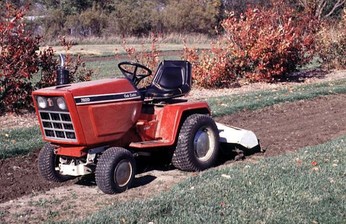
Flowers:
Fall Care of Peonies
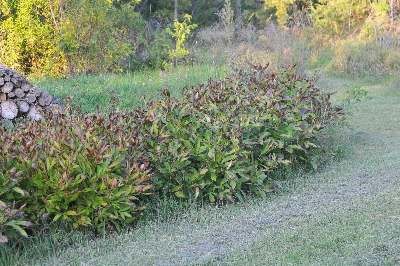
Never apply fertilizer directly on the center of the peony as the buds (eyes) may be damaged. Rather, place the fertilizer in a band from 8 to 18 inches from the center of the plant. Water the fertilizer in so the plant can take it up.
Winter protection of herbaceous peonies is only necessary the first winter after planting to prevent alternate freezing and thawing from lifting plants out of the soil. A couple of inches of mulch should be sufficient. Any organic material that does not mat down will work and should be applied after the ground freezes. Avoid using leaves that will mat together. Remove the covering before growth begins in the spring.
The less common tree peonies have woody stems like deciduous shrubs and should not be cut back to the ground or pruned in the fall. Collect the shed leaves and place in the compost pile this fall. Though tree peonies are hardy to Zone 4, they do benefit from a light mulching over winter. Also, it is recommended that tree peonies be fertilized during November to get the plants off to a good start next spring. It is best to take a soil test to see what nutrients are needed. If the soil needs phosphorus and potassium, use a complete fertilizer (such as 10-10-10, 9-9-6, etc.) at the rate of 2.5 pounds per 100 square feet. This would equal 1 rounded teaspoon per square foot.
If phosphorus and potassium are not needed, blood meal makes an excellent fertilizer. Apply at the rate of 2 pounds per 100 square feet or 1 teaspoon per square foot. Turf fertilizers such as a 27-3-3 or 30-3-3 also can be used but at the rate of to 1 pound per 100 square feet or 1 teaspoon per 2 square feet. (Ward Upham)
Miscellaneous:
Begin Rabbit Protection Now
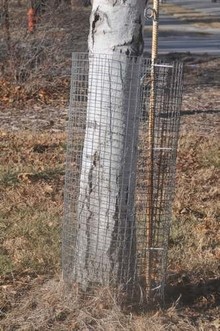
Horseradish

To use horseradish, peel the large, fleshy roots and cut into sections. Use a blender or food processor to chop the roots along with a small amount of water and a couple of ice cubes. Vinegar or lemon juice is added to stop the process that produces the “bite” of horseradish. Add immediately after blending for a mild flavor or wait up to 3 minutes to give the horseradish more kick. Use 2 to 3 tablespoons of vinegar or lemon juice per cup of horseradish sauce along with ½ teaspoon of salt for flavor.
Horseradish has an extremely strong odor and so you may wish to open the blender or food processor outdoors and to keep your face away from the container when opening. Store ground horseradish in a tightly sealed jar in a refrigerator until ready for use. (Ward Upham)
Knotweed Control
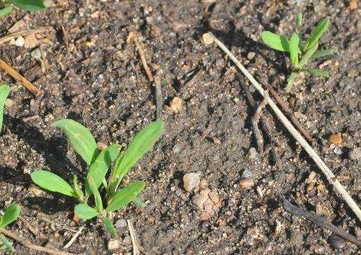
The other option is to use a combination postemergence product such as Trimec, Weed-Out, Weed-B-Gon or Weed Free Zone after the knotweed has germinated in the spring but is still young.
If spring seeding of the lawn is planned, your options are more limited. Buctril can be used on commercial sites and has a very short residual. It must be used on very young knotweed to get control. Trimec and others require a month before overseeding to thicken up your lawn. Obviously, don't use a preemergence herbicide if you are trying to get new seed established. For homeowners seeding in the spring, tilling will control knotweed adequately without using a herbicide. If seeding without tilling (e.g., overseeding using a slicer-seeder), then use a combination product such as one mentioned above just after the knotweed comes up in the spring, and be sure to wait at least a month before seeding. (Ward Upham)
Potential Problems with a Warm Fall
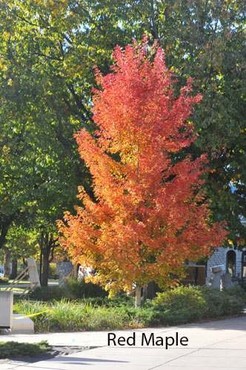
There is not a lot that can be done to protect trees and most shrubs (other than making sure the soil under them is moist) but we may be able to help herbaceous perennials. Herbaceous perennials would not only include our perennial flowering plants that die to the ground each year but also other plants such as strawberries. As long as the weather remains mild or temperatures drop gradually, keep the plants uncovered to allow them to acclimate. However, if there is a sharp drop in temperature (to mid-teens or lower), throw mulch or some other covering over them to help moderate temperatures. Uncover again as temperature rise to allow the plants to continue the acclimation process. Some tender herbaceous perennials (such as strawberries) need a permanent mulch through the winter months to help protect them from dessication and heaving caused by freezing and thawing of the soil. This is best done when temperatures have been cold enough to leave some frost in the ground. (Ward Upham)
Contributors: Ward Upham, Extension Associate
 RSS Feed
RSS Feed
